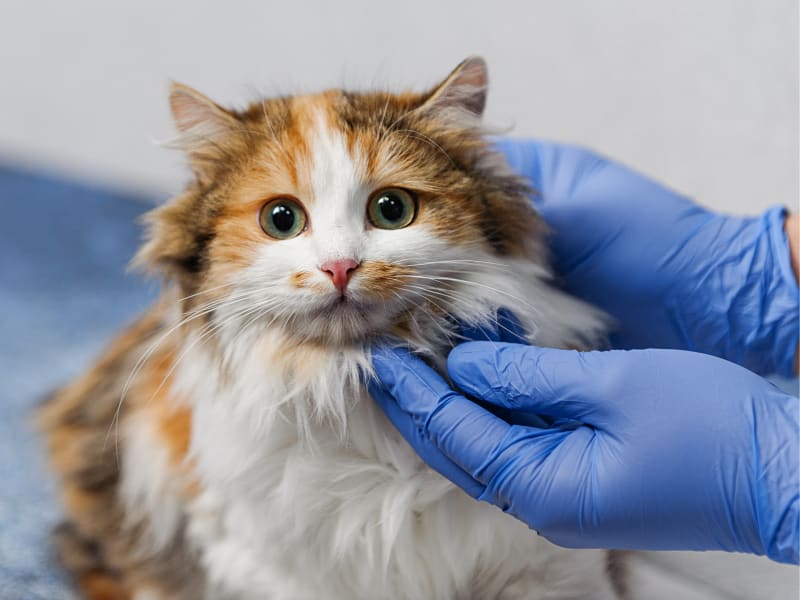Diagnostic imaging, or taking pictures of the inside of the body to help determine the source of a problem, can be required for cats in a variety of situations. Today, our Ventura vets discuss MRI on cats, what it is, and why it might be needed.
What is MRI in cats?
Magnetic resonance imaging (MRI) has been widely used to help diagnose human health issues since the early 1980s, but veterinary MRIs have only recently become more widely used.
MRI scans can provide your veterinarian with high-resolution, detailed images of soft tissues in your cat, such as the brain, spinal cord, ligaments, tendons, and abdominal organs. Veterinary MRIs can provide a more detailed image of your cat's body than other diagnostic imaging tools, such as X-Rays or CT Scans, for many types of soft tissue injuries or diseases.
If your cat is limping, lame, having seizures, experiencing joint pain, neck pain, back pain, or paralysis, an MRI may be recommended to help diagnose the cause of your pet's symptoms.
MRIs for cats usually take 45 minutes to an hour to complete. For an MRI to be successful, the patient must be completely still. A general anesthetic will be administered to your cat prior to the MRI scan to ensure its success. Blood tests and X-rays are typically recommended prior to the MRI to ensure that your cat is healthy enough to be sedated.
When is an MRI useful?
For cats, an MRI may be useful in the following situations:
- To identify brain and spinal cord issues
- Examination of the nasal cavity, sinuses, and ears
- To better visualize internal organ abnormalities
- In cases where a simple x-ray or ultrasound did not reveal enough information to make a diagnosis
MRI is non-invasive, does not use radiation, and is thus considered very safe. It can provide critical diagnostic information for your cat's condition, assisting you in determining what is wrong with them.
They are, however, quite expensive because the equipment used is highly technical. An MRI is usually a last resort, used only if other diagnostic imaging techniques are ineffective.
How is an MRI performed?
An anesthetized cat is placed on a moving table before being placed inside a tube-shaped machine. The MRI usually takes 10-15 minutes, and the pet's vitals are monitored throughout. Images are displayed in real time for a veterinary specialist to assess, and they are also recorded for later viewing.
What is the difference between an MRI scan and a CT scan?
CT scans produce images using x-rays, whereas MRI does not. Soft tissue MRI images can be more clear and detailed than CT scan images. CT scans frequently produce better images of bony structures than MRIs.
Your veterinarian will recommend which test for your cat based on the structure to be examined and what the doctor hopes to discover.
Does your pet have an upcoming MRI appointment at Veterinary Medical and Surgical Group (VMSG)? Contact our vets today if you have any questions about the test.
Looking for a veterinary specialist in Ventura?
We're always accepting new patients, so contact our veterinary hospital today to book your pet's first appointment.Related Articles View All
Anesthesia for Dogs
Most dogs are given anesthesia when they are spayed or neutered, and the majority of them will require it at least once throughout their lives. Our four-legged pets, like us, may require anesthesia as part of a surgery or procedure. Today, our Ventura vets discuss what you should know about anesthesia for dogs.
MRI for Dogs: How They Can Help
At Veterinary Medical and Surgical Group (VMSG) in Ventura, our board-certified veterinary neurologists use our in-house MRI to help diagnose a range of health issues in dogs from a ruptured cranial cruciate ligament to brain tumors. Today our vets explain why MRI scans for dogs can be helpful, and the conditions this technology can help diagnose.
FHO Surgery in Cats
FHO surgery can be an effective and relatively inexpensive surgical treatment option for hip problems in cats. Today, our Ventura vets describe the hip anatomy of cats, hip problems that could affect your kitty and what’s involved in FHO surgery and recovery.
Cataract Surgery in Dogs
Cataracts prevent light from reaching the retina of your dog, resulting in blurred vision and, ultimately, blindness. In today's blog, our Ventura veterinarians discuss the causes and symptoms of canine cataracts, as well as the surgery used to treat this eye condition.
Signs Your Pet Should See an Emergency Vet
Conditions that necessitate immediate medical attention in pets can arise in the same way that they do in humans. Ventura veterinarians explain when emergency care is necessary and what to do in those situations.

